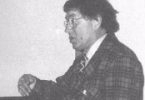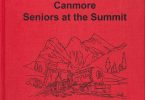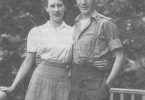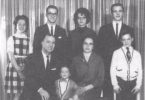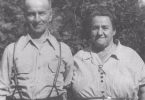On June 1, 1926 the first organizational meeting of the Canmore Golf and Curling Club took place at the Memorial Hall (the old YMCA). The club officially became the Canmore Golf Club with a total of seventeen members. The first president was Mr. A. Francis; vice-president was Father Osborne; secretary was Mr. C. Fowers and the members of the committee were R.M. Young, Mr. A. Latimer and Mr. Summerhays.
The nine hole sand green course was originally where the Seniors’ Retirement Home is now located. The course had mine tracks running through the middle of it. Anyone over the age of fourteen could join as long as they could afford the five dollar green fee. One could, however, receive a two dollar discount for volunteer work on the course.
In 1962 Jack Gustason, Bill Cherak, Bill Millen (head of the Legion), Johnny Cavanaugh (Canmore Mines), and Pop Gainor (M.L.A. for Banff Canmore) went to Edmonton in a car borrowed from Steve Martini and got a recreational grant for 4800 dollars from the government to move from the old golf course to the new one. This was nine holes, built with all volunteer labor from the Canmore Legion, Canmore Miners Union, Ladies I.O.O.F Lodge and citizens of Canmore. Canmore Mines donated their equipment free of charge to build the first nine. Then in 1975 the second nine was built. This did not involve the volunteer labor as the first nine did. Jack Gustason carried the debt(land) of the old course so it would not go out of existence. In 1988 they used the clubhouse as the athlete’s village for the 1988 Olympics nordic events.
The following information was provided by Bill Cherak to be included in the Canmore Golf Report. “Envision finishing your game and joining your friends around a fire pit, near where the eighteenth hole is today, mason jar in hand, and a coyote or two watching from the distance. That was how it was until some of the original members decided to move the old clubhouse. The clubhouse was a shack with no electricity. Tournaments would end with Louigi from the Banff Springs Hotel on his accordion, following the golfers down the last fairway. The ladies would prepare dinner and the Randle’s piano was lightly tossed onto a truck and brought down to the clubhouse for the post tournament activities which lasted much longer into the night than they do nowadays.
It seems that the course was quite a busy place back then. Wild creatures everywhere, people chasing animals, animals chasing animals, people chasing people chasing animals. Elk were running amok as this was the place for Elk Love. This was the elk honeymoon resort, but only until bow hunting season opened. Then it was the bow hunters that were herded off the course. Arguably the place must have been vacant, quiet and peaceful for at least one day because at some point a pilot mistook the first fairway for the Banff airstrip and landed, embedded the craft in the green, and upset the herd of horses that were grazing there. The horses more than likely ambled to the next green as was their habit and the pilot, upon realizing his error, freed the plane and taxied down the fairway, promptly clipping all the trees by the old clubhouse. He was fined a hefty restoration fee of thirty five dollars. Top dressing of the greens set the course back ten dollars each. Thankfully all the work was done by the volunteers.
Then there was the day in the early 60’s that a group of ladies began a fabulous day of golf. Approaching the second green, what sight greeted them? Not a herd of horses, or mating elk, mad hunters, perplexed pilots or even a stray strutting goose, but a mother bear and her two cubs playing with the flagpole. I think the ladies called it a day.”
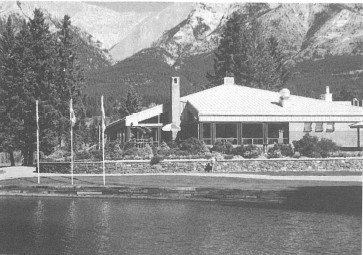
Golf Club House
In Canmore Seniors at the Summit, ed. Canmore Seniors Association, 2000, p. 31-32.

